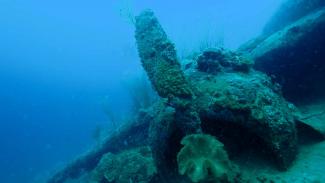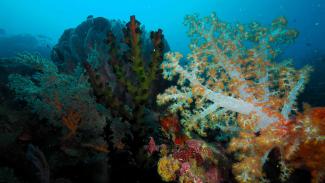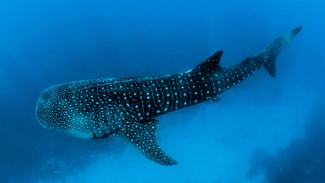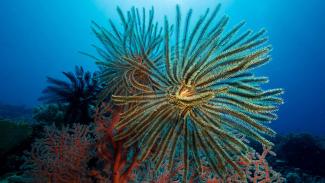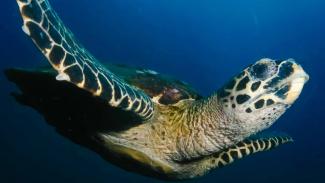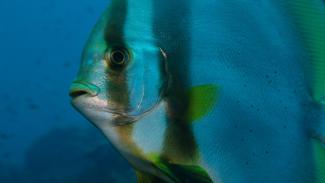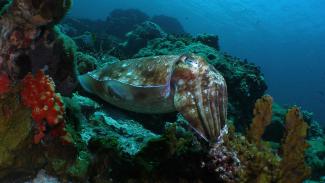
Just off the coast from Kota Kinabalu, Sabah's regional capital - the five islands that make up Tunku Abdul Rahman National Park are often overlooked by divers heading straight to Sipadan in the south.
The national park, which is named after a former Malaysian president, has some very good diving though, with pretty fringing reefs sloping gently down from white-sand beaches, plus some rare & unusual species.
Around two hours away, there are some wrecks for experienced divers.
Highlights
Best diving spots
Gaya Island is the main island in the group. Just south of here, Sapi Island has some good dive sites. Edgel Patch is a nice dive, where it’s well worth exploring amongst the corals for rare critters. Resting Nurse sharks can sometimes be found. Clements Reef has an alluring garden of gorgonians and soft corals, with abundant reef fish and large schools of Snapper.
To the south, there are more nice easy dives around the beautiful islands of Manukan & Mamutik, including Mid-Reef, a fully submerged reef that reaches from 30m to within 5 metres of the surface. The corals here are healthy and reef life is good, with Cuttlefish, Batfish, Trevally & small Barracuda.
In the south, Sulug Reef is a good place to find a variety of more unusual species. Frogfish can be seen here and the sandy area around 25m is a good place to look for Nudibranch’s.
Green Turtles are regular visitors to the area and around February & March, there is quite a good chance to see migrating Whale Sharks.
Around two hours away, a couple of WWII wrecks have recently been discovered. The Usukan Wreck is a huge Japanese Maru that was sunk in 1944 by American submarines. It lies in between 25 and 40m, making it a good dive for more experienced divers. The ship is huge, over 200m long and is home to healthy populations of marine life. Huge schools of Trevally cloud the upper regions of the wreck and large Rainbow Runner hunt for their next meal. A large Grouper lives in the wreck and Whitetip Reef Sharks lay on the sand at it's base. Numerous colouful corals have taken root on the wreck as well, providing a refuge for many smaller fish.
Nearby is another nice wreck, known as the Rice Bowl. This wreck is also an excellent dive, acting as an artificial reef for a myriad of marine life including schools of Batfish & Barracuda floating above. Many Scorpionfish lie perfectly camouflaged on the wreck, so good buoyancy is important.
Conditions are normally very calm and the diving is generally relaxing and enjoyable, although visibility can be limited.
When to dive
The park can be dived all year round, with the best months from March - October.
Getting there
Kota Kinabalu is easy to reach, with regular flights to most major towns in Malaysia as well as some international flights. If you are already in Sabah, there are buses from most major places to Kota Kinabalu.
Activities
The main attraction here is Mount Kinabalu, Borneo's highest mountain at around 4300m. Lok Kawi Wildlife Park is another popular attraction. There is also an interesting market, as well as a museum and some buildings of historical interest. Many watersports, including diving, are on offer in Tunku Abdul Rahman Park. KK is also a pretty good place to do some shopping.
Resort and liveaboard options
Being a city, there is a large range of accommodation on offer, from luxury hotels to budget hostels & guest houses. Most of the budget options are in the city centre, while the more expensive resorts tend to be a little out of town.


